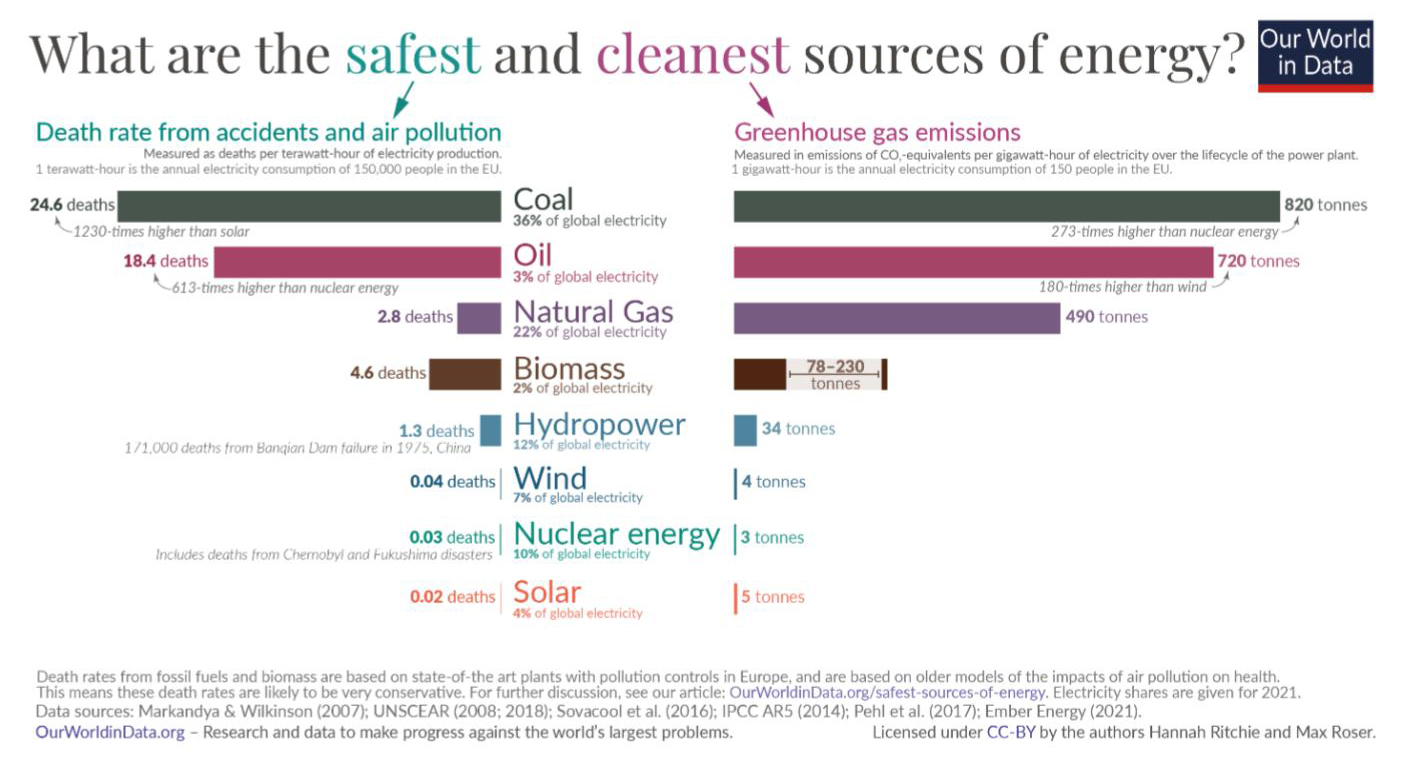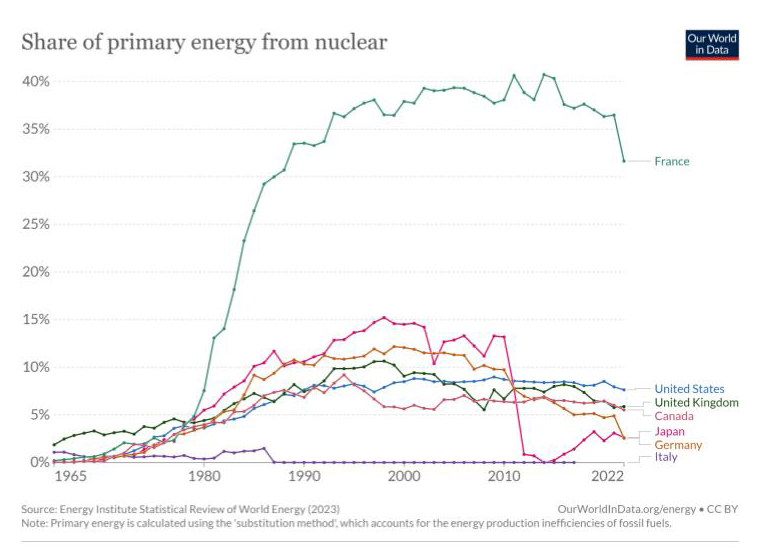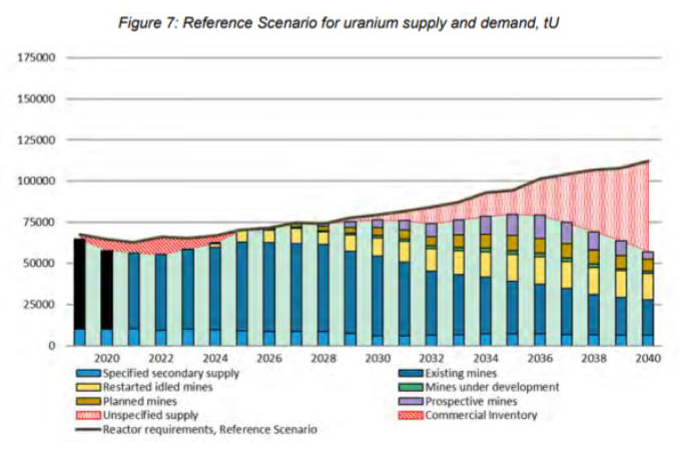Uranium
The global trajectory is aimed at achieving net-zero carbon energy. With the growth of populations and energy demands, upcoming energy sources must possess traits of cleanliness and sustainability. Among these sources, which one stands out as the most environmentally friendly?
![]() 1 Uranium Fuel Pellet has as much energy as:
1 Uranium Fuel Pellet has as much energy as:
![]() 17,000 cubic feet of natural gas
17,000 cubic feet of natural gas
![]() 149 gallons of oil
149 gallons of oil
![]() 1 ton of coal
1 ton of coal

Nuclear Reactors
Nuclear power reactors use the heat produced from splitting atoms to generate steam to drive a turbine. No greenhouse gases are produced in the fission process, and only very small amounts are produced across the whole nuclear life-cycle. Nuclear power is an environmentally-friendly form of electricity generation and does not contribute to air pollution.
Nuclear power generates about 10% of the world’s electricity
From about 440 power reactors
Over 50 countries utilize nuclear energy as part of their energy production
About 60 power reactors are currently being constructed
About 100 are on order or planned
And over 300 More power reactors are proposed
Share of primary energy from Nuclear
This interactive chart shows the share of primary energy that comes from nuclear sources.
France has one of the highest levels of nuclear energy consumption in the world. In 1974, following the oil shock, France made a strategic decision to rapidly expand its nuclear power capacity. Currently, over 70% of France's electricity is generated from nuclear power. This high reliance on nuclear energy has contributed to France's low electricity sector emissions and its ability to export energy to other countries.

Sources: Our World in data | Wikipedia | NY Times
Uranium Markets
Uranium Demand:
- Uranium demand is expected to rise ~160% over the next decades¹
- Geopolitical concerns continue to drive nuclear fuel contracting as buyers look to reduce or eliminate Russian exposure and reliance
- Positive demand outlook for existing reactor fleet, with major government efforts in the U.S., China, Japan, and South Korea
- Small modular reactors move closer to deployment. Uranium demand impact potentially beginning in the late-2020s
The need to find new uranium deposits
Overview of current Uranium Reserves:
The total world resources of uranium are not known exactly, but the known reserves in the ground capable of being mined are estimated to be sufficient for several decades. According to the OECD-NEA, the world's uranium resources were estimated at 7.6 million tonnes at the end of 2019. Most uranium deposits are located within large uranium provinces where exploration is active and new deposits are discovered on a regular basis.
Importance of exploration and development of new uranium deposits:
Discovery and development of new uranium deposits are crucial for ensuring a long-term, sustainable supply of nuclear energy. The next generation of uranium deposits has the potential to revolutionize the energy industry by utilizing new technologies and developing innovative extraction processes, making uranium extraction more efficient and cost-effective. Governments and mining companies must work together to find new sources of uranium by exploring new deposits and developing new technologies such as uranium recycling.
Potential for uranium supply shortages:
The demand for uranium is expected to increase in the coming years as more countries adopt nuclear power as part of their energy mix. This could lead to potential supply shortages in the future if new sources of uranium are not discovered. However, the potential for uranium supply shortages can be mitigated by exploring new deposits and developing new technologies.
Sources: Science Direct | OECD NEA | IAEA | World Nuclear
Next entry: The Growing Demand for Uranium in a Nuclear-Energized World
Previous entry: Why you should have Gold in your Portfolio

